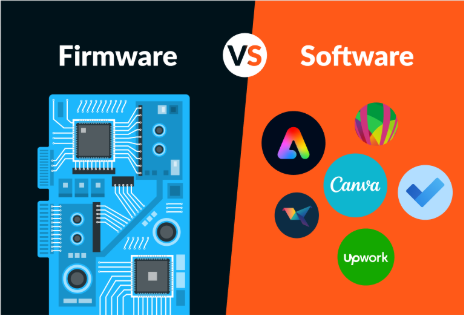
What is Middleware? The Bridge Between Software and Operating Systems
Ever wondered how apps smoothly communicate with your device’s operating system, databases, or even with other apps? The answer lies in a behind-the-scenes hero: Middleware.
Whether you’re streaming a movie, shopping online, or using a cloud app at work, middleware plays a crucial role in making these digital interactions seamless.
In this blog, you’ll learn:
- What middleware is
- Why it’s important
- Real-world examples
- Different types of middleware
- How it fits into modern computing
What is Middleware?
Middleware is a type of software layer that sits between the operating system and the application software. Its job is to help different components of a system communicate and work together effectively.
It acts like a translator or messenger, enabling:
- Applications to talk to databases
- Systems to communicate over networks
- Devices to interact with operating systems
Think of it as the “glue” that connects software components so they can function as a whole.
How Middleware Works – Simplified
Let’s imagine a simple example:
You use an online food delivery app:
- The app (application software) sends your order.
- The middleware takes that order, communicates with the server, processes the data, connects to the payment gateway, and updates the restaurant system.
- The operating system just makes sure the underlying device is functioning.
So, while you just click “Order,” the middleware makes all the complex communication happen smoothly in the background.
Types of Middleware
There are many types of middleware, each designed for specific tasks. Here are the most common ones:
1. Database Middleware
Helps apps interact with databases by managing data requests and transactions.
- Example: ODBC (Open Database Connectivity)
2. Message-Oriented Middleware (MOM)
Transfers messages between distributed systems reliably.
- Example: RabbitMQ, Apache Kafka
3. Remote Procedure Call (RPC) Middleware
Allows programs to run functions on another system as if they were local.
- Example: gRPC, SOAP
4. Object Request Brokers (ORB)
Helps apps make requests to objects on other systems.
- Example: CORBA (Common Object Request Broker Architecture)
5. Transaction Processing Monitors
Ensure that all parts of a transaction complete successfully.
- Example: IBM CICS for banking systems
6. Middleware for Web Servers
Connects web applications with back-end services like databases or APIs.
- Example: Apache Tomcat, Node.js middleware functions
Real-World Examples of Middleware in Action
E-commerce Sites:
Shopping carts, payment gateways, and shipping systems all rely on middleware to interact with different services in real-time.
Banking Apps:
Middleware securely connects mobile apps to core banking systems, ensuring real-time balance updates and secure transactions.
Healthcare Systems:
Middleware helps patient management systems talk to lab results databases, appointment systems, and insurance networks.
Cloud Services:
Amazon Web Services (AWS), Microsoft Azure, and Google Cloud offer middleware to manage cloud apps, APIs, security, and scaling.
Middleware vs Other Software
| Feature | Middleware | System Software | Application Software |
| Role | Acts as a bridge between OS and apps | Manages hardware and core functions | Directly interacts with the user |
| User Interaction | No direct interaction | Minimal (via OS settings) | High (user interface, menus, input) |
| Examples | Web servers, API managers, database bridges | OS, device drivers, file managers | Browsers, games, office suites |
Also Read: What is System Software?
Check: Types of Software Explained Simply
Why Middleware is Important
Middleware is essential in:
- Modern web development
- Enterprise systems
- Cloud computing
- Mobile apps
- IoT devices
It provides:
- Scalability – helps apps grow efficiently
- Security – enables secure data handling
- Integration – allows multiple services to work together
- Efficiency – reduces redundancy and complexity
Final Thoughts
Middleware might be invisible to users, but it’s absolutely essential for modern technology. It ensures that different systems — operating systems, applications, services, and databases — all work together smoothly and securely.
Whether you’re building apps, managing IT systems, or just curious about how tech works, understanding middleware gives you deeper insight into how digital systems truly function.


